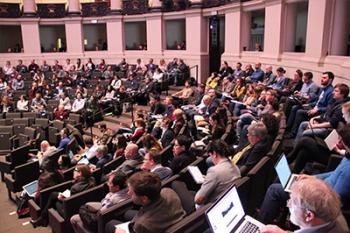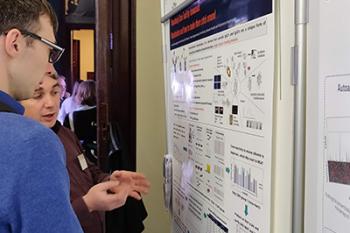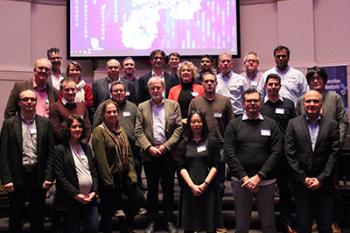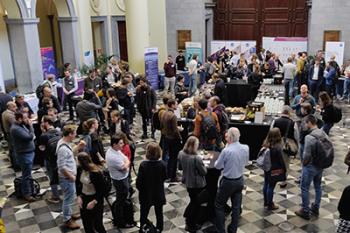Facts & figures:
On 2 & 3 December 2019, VIB welcomed 270 people for the third edition of Next-Generation Protein Analysis and Detection. This VIB Tools & technologies conference took place in the Aula, Ghent. A mix of academic and company speakers presented their novel technologies in plenary and parallel sessions focused on: Analytical and Clinical Proteomics, Biosensing and Molecular Diagnostics, Recombinant Antibody Tools, Single Cell and Single Protein Analysis, Interactomics and Post Translational Modifications. More info
Our conference reporter An Staes (VIB Center for Medical Biotechnology) about NGAPA19
When one thinks of protein sequencing, mass spectrometry is the first thing that comes to mind. At the third Next-Generation Protein Analysis and Detection meeting that took place at the beginning of December in wintery Ghent, some skilled speakers showed that other players are arising. By adapting the method for DNA sequencing, it is not only possible to sequence proteins, but also to detect and analyze them on a single molecule level. The technology for protein analysis on this single molecule level is what is still very preliminary in mass spectrometry driven proteomics. Keeping in mind the fact that tumors contain quite some different cell types, single molecule detection will show more differences that matter compared to healthy tissue. Will this development shift the technology to analyze the proteome away from mass spectrometry in the future? Or will both fields merge and new technologies like mass photometry will take over, which was shown in this meeting to be quite powerful.
DNA sequencing technology has evolved to the stage where it can be applied in the field, and is not bound anymore to the lab environment. Transposing the technology to protein sequencing would inevitably mean taking protein sequencing to the field as well using very small devices. Opposed to the more high-end proteomics which is still very lab restricted.
Nevertheless, quite some nice biological questions were addressed and exploited by the use of novel and clever mass spectrometry based technologies. Looking into the matter from a different angle such as digging into the waste bin of the cell aka the proteasome or the surfaceome instead of the regular cytosolic shotgun proteome, discovers quite some new insights. Moreover, resulting conclusions can be more easily implemented for treatments and diagnostics.
Concluding from quite some work presented here, mass spectrometry is still evolving quite extensively and new technologies are ahead that shift proteomics by mass spectrometry to another level.
Not only a shift in analysis was proposed, even moving away from the very well established use of antibodies for diagnostic tools was addressed. Furthermore, on the level of detection, bioluminescence was proposed as a very powerful alternative for fluorescence, again a well-established and widely used technique. Since bioluminescence does not have a background problem in plasma as fluorescence has, it is of high interest for diagnostic tools.
Last but not least, artificial intelligence is also taking its first steps in the world of proteomics, showing insights and tendencies in the data that no human brain could ever cover. Using the already extensive data that is present, a lot is to be learned by machine learning that can be used to create data of higher quality by the use of better and more classifications.
The Next-Generation Protein Analysis and Detection meeting opened the world and the mind of both genomics and proteomics people to look passed the borders of their field and join forces in the battle against diseases evolving into a next-generation of omics people.




